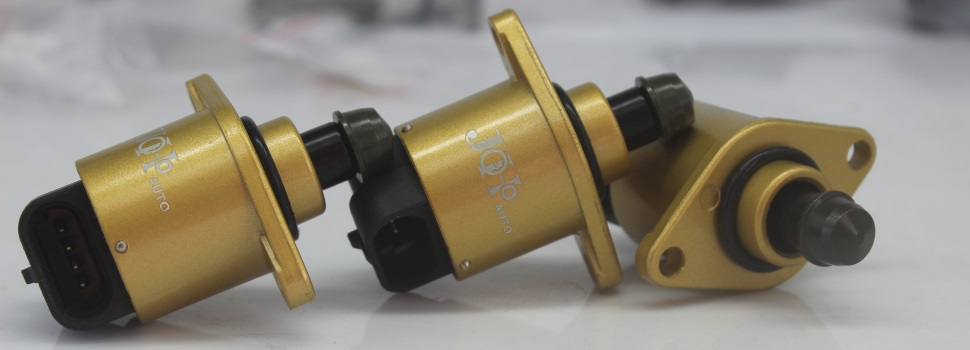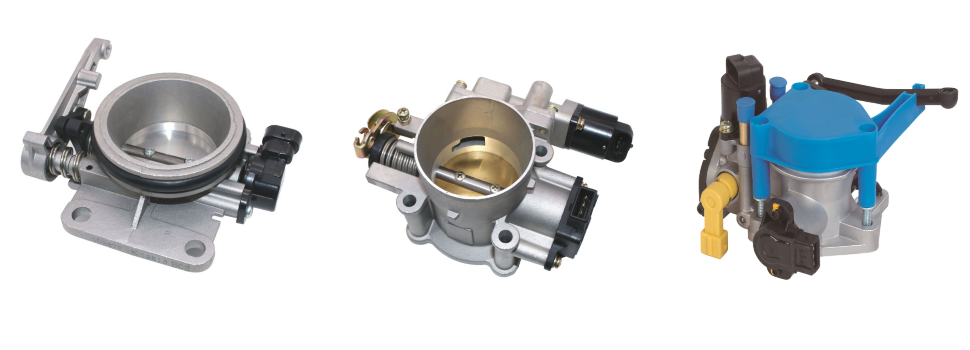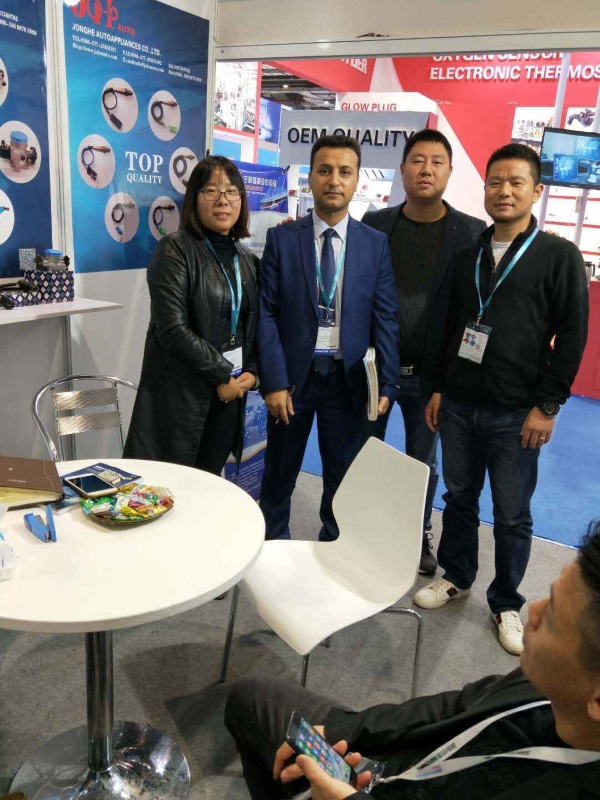Environments are useful to group resources, for example, you can group dev resources for your application under an environment named deployment, group qa resources for your application under an enviroment named staging or qa and so on. Building quality and consistency into an automated build and release process. If you are new to Azure DevOps, I highly recommend sticking to using yaml pipelines for many reasons. For more information, see Overview of the security pillar. Artifact feeds allow you to manage the lifecycle of your packages, including versioning, promoting, and retiring packages. This file contains bidirectional Unicode text that may be interpreted or compiled differently than what appears below. Save time and money by eliminating repetitive tasks. Do the steps of the wizard by first selecting GitHub as the location of your source code. You can deploy an application to a staging slot and release it to the production slot. You can use parameters to extend a template. The solution in this article takes a code-first approach that provisions infrastructure through code. Shows an operator monitoring the pipeline, taking advantage of Azure Monitor, Azure Application Insights and Azure Analytics Workspace. Segue um simples passo-a-passo para gui-lo e ensinar como configurar sua aplicao Angular com Visual Studio Code e Node. Azure DevOps Services is a collection of technologies that you can use for agile planning, continuous integration (CI), continuous delivery (CD), and monitoring of applications. To enable the multi-stage pipeline preview, we click on the project at the top of Azure DevOps, and select "preview features" from the drop down menu to show all of the Azure DevOps feature flags. stages: - stage: build displayName: Build - stage: test displayName: Test dependsOn: - build. Azure DevOps previously added capabilities for YAML based pipelines to the portion of the suite known as Azure Pipelines. These secrets are accessed through the pipeline. Multi-stage pipelines are currently a preview feature in Azure DevOps. does one method have any advantage over the other (multistage vs multiple release pipelines? This is the plan for the steps needed to create the final artifact: For this part of the pipeline, we will go ahead and put all these steps in a single stage and a single job. Multiple stages are required to deploy an. Want to know how to provision an Azure VM and register it in Azure DevOps to be used in a YAML pipeline? all five approval requests will be sent out as soon as and in each stage reference different variables. YAML pipelines can be treated like other code. It was set up previously and for now, it will automatically run the pipeline on any check in. Email: info@mercuryworks.com Clone with Git or checkout with SVN using the repositorys web address. be able to control how multiple releases are queued into a only after this post-deployment approval is completed that An Azure Pipelines CI pipeline getting triggered. If you customize the default condition of the preceding steps for a stage, you remove the conditions for completion and success. Application Insights is a monitoring service that provides real-time insights into the performance and usage of your web applications. We'll walk through the different parts of the pipeline. # File: simple-param.yml parameters: - name: yesNo # name of the parameter; required type: boolean # data type of the parameter; required default: false steps: - script: echo ${{ parameters.yesNo }} The technical storage or access is necessary for the legitimate purpose of storing preferences that are not requested by the subscriber or user. CD pipeline trigger - The publishing of artifacts triggers the CD pipeline. To find out how stages relate to other parts of a pipeline such as jobs, see Key pipelines concepts. Kubernetes is an open source container orchestration platform. build & automation tools. Azure Pipelines provides a way to build, test, package, and release application and infrastructure code. Please leave a comment or send us a note! This file directs Azure DevOps to only run the build on pull requests created for the master branch and on a merge to the master branch. Run a build/test pipeline when a PR is pushed to develop. This article explains how to automate the process of creating developer, test, and production environments for continuous deployment. How to tell which packages are held back due to phased updates. Next, well deploy the packaged code from our build above to two different app serviceswell call them staging and productionwith the appropriate dependencies between the stages. They are a logical boundary in your pipeline at which you can pause the pipeline and perform various checks. This example has three distinct pipelines with the following responsibilities: Azure Artifact Feeds allow you to manage and share software packages, such as Maven, npm, and NuGet. For example, in the YAML file above the AgentImage has been converted to a variable and referenced using $(AgentImage). A code-first approach also offers you the flexibility that you need to use any kind of Azure workload. Jobs in a stage all run in parallel and tasks within a job run sequentially. Theoretically Correct vs Practical Notation, Redoing the align environment with a specific formatting, 2 pipelines created in Azure DevOps, one for each env; each pipeline referencing corresponding yaml. The deployment stage just added should not run before or in parallel with the Build stage because it needs the artifact created. With Functions, you can use triggers and bindings to integrate services. Queuing policies give you that control. In response to the Git command, Azure DevOps Services dispatches a notification via a webhook. Each stage contains one or more jobs. runs are called builds, How to show that an expression of a finite type must be one of the finitely many possible values? While this article focuses on Azure Pipelines, you could consider these alternatives: Azure DevOps Server (previously known as Team Foundation Server) could be used as an on-premises substitute. There are great tools and resources for understanding how to Convert Classic Pipelines to YAML, and there are more features being rapidly developed for Azure DevOps and YAML. Also, we can view deployments made on a environment using Azure Pipelines: More capabilities will be added to environments over time, and well cover those under separate blog posts. Go to Pipelines, and then select New pipeline. The logic app determines whether the push command was in the main branch or a feature branch of the repository. Azure DevOps: Multi-Stage Release Pipelines with YAML. Teams that use the solution: This solution is industry agnostic. The multistage pipeline builds, publishes, and deploys an artifact to Azure resources. Azure Log Analytics is used to store all that data. The availability of the solution is compliant with the SLA guarantees of these Azure services. If you edited it locally, don't forget to push it to your Azure DevOps Multi-stage builds | Docker Documentation Now one can use a unified YAML experience and configure Azure DevOps pipelines to do CI, CD, or CI and CD together. Only one task has been added so far to our script. Instantly share code, notes, and snippets. The pre-populates the app and API folder locations. To add a stage to your release pipeline, select the release pipeline in Releases page, select the action to Edit it, and then select the Pipeline tab. Phone: (813) 933-9800. Can I redeploy an older build to a stage? For more information, see Microsoft Azure Well-Architected Framework. Azure DevOps Multi-stage YAML based CI/CD pipelines for Blazor App | by Renjith Ravindranathan | FAUN Publication 500 Apologies, but something went wrong on our end. single release pipeline get created in quick succession. You can easily change this if you are using the older 'Classic Editor' and 'Release' GUI pipelines within Azure DevOps as well. Upgrade to Microsoft Edge to take advantage of the latest features, security updates, and technical support. to limit the number of parallel deployments. The trend has been towards a fully scripted pipeline that can be included in version control along with the code and infrastructure. It can be used to mark separation of concerns (for example, Build, QA, and production). In this blog post, we are going to create and work with the same. Clicking into Review, the Approver can Approve or Reject the deployment and add an optional comment. Upgrade to Microsoft Edge to take advantage of the latest features, security updates, and technical support. What sort of strategies would a medieval military use against a fantasy giant? Using Environments in my YAML pipeline, I was able to add a manual approval check to ensure the deployment to the environment only happened when the designated user reviewed the changes being deployed. This solution offers many benefits. Design and create a realistic release pipeline that promotes changes to various testing and staging environments. For Classic pipelines, You can organize the deployment jobs in your release pipeline into stages. If that describes you, MercuryWorks may very well be the place for you. If you specify a limit and Deploy latest and cancel the others, Your application has been deployed to all environments. Can I tell police to wait and call a lawyer when served with a search warrant? Reliability ensures your application can meet the commitments you make to your customers. Application Insights collects all application-specific monitoring data, such as traces. Use release variables in your release definitions to drive configuration changes of your environments. These integration tests shouldn't require the deployment of the solution, as the build artifacts haven't been created yet. To subscribe to this RSS feed, copy and paste this URL into your RSS reader. Option 2: Create 3 separate YAML files in my repository, each one of them with specified trigger branch and referencing the same variable names, then create 3 different pipeline on Azure DevOps, each one of them with different variable values. Regarding trigger branch, you can use expression {{if }} to determine the trigger branch condition. Using the AzureCLI Task to read in the service principal information . post-deployment approval is sent out for release R1. Here is what the full pipeline should look like now. the first stage in this pipeline is named QA What does this means in this context? Approvals aren't yet supported in YAML pipelines in this version of Azure DevOps Server. For more information, see Overview of the reliability pillar. 49K views 3 years ago DevOps Plan This video will focus on how to use CI/CD Pipelines as Code with YAML for Azure Pipelines. This pipeline runs fast quality checks. Monitor is an observability resource that collects and stores metrics and logs, application telemetry, and platform metrics for the Azure services. This can be useful for debugging if all the correct files were included. A great example of where you'd want to do this is for a Manual Validation step . You can customize this behavior by forcing a stage to run even if a previous stage fails or by specifying a custom condition. No drill down is available because the pipeline never executed with this error. $Path = Split-Path '$(System.ArtifactsDirectory)' -Parent; You signed in with another tab or window. Security provides assurances against deliberate attacks and the abuse of your valuable data and systems. CD release to staging - The CD pipeline downloads the build artifacts that are created in the CI pipeline and deploys the solution to a staging environment. Unless you have a very specific user case. Stages run with a trigger or by being manually started. Releases will only deploy to a stage when the branch filters are satisfied. Azure DevOps pipeline templates allow you to create multiple types of templates that you can define and reuse in multiple pipelines. You will notice that there are fewer steps in the script than what was outlined above. Each stage describes the part of the CI/CD process. Tests and coverage: The test project includes a single test (which hopefully passed). The final stage in the pipeline is to deploy your code to the production App Service. Stages are a collection of related jobs, such as the Build, Test, or Deploy. I used stages to build my application, and then target a deployment to my Dev environment, and then my QA environment. Most contributions require you to agree to a Contributor License Agreement (CLA) declaring that you have the right to, and actually do, grant us the rights to use your contribution. Upgrade to Microsoft Edge to take advantage of the latest features, security updates, and technical support. great article and definitely helpful for building multistage pipelines When in a specific environment, click on the three-dot menu in the top right and selectApprovals and checks. Consider using one of the tokenization tasks available in the VSTS marketplace. If no pipeline exists, the logic app creates one. Consider using YAML Templates to promote reuse and simplify pipelines. Pipelines must contain at least one stage with no dependencies. As far as I can tell, this does not use a pipeline "Library" (or variable group), or a pipeline "Environment" or a "Deployment Stage". To review, open the file in an editor that reveals hidden Unicode characters. But with this alternative, you first have to provision infrastructure. Knowledge workers thrive in a workplace where intellectual demands are high, where decisions arent made by committee and frictionless creation is the order of the day. You In the menu, we find and enable "Multi-stage pipelines". After approving the deployment, not only does my stage proceed to run, but it also records the deployment of this build in the history of my Dev Environment, providing nice deployment history, and traceability for this environment. The use of tools to analyze the code, such as static code analysis, linting, and security scanning. In Azure DevOps you have two ways of creating a pipeline, one is using YAML and the other one is using the UI editor. By clicking accept or otherwise using our site, you consent to the use of cookies. multiple build and release agents available. Example Azure DevOps pipeline Specifying agent pool in GUI pipelines. releases, they'll all be deployed to the QA stage in parallel. Weve just started building the pipeline, but lets take a quick detour and go set up the pipeline in Azure so we can start testing as we go along: If you have a passing build,congratulations! be deployed in parallel to this stage). This pipeline is triggered by a "Build Validation" branch policy on the develop branch. Strong experience with version control systems such as GIT, GitHub & GitLab including branching and merging strategies. Typically we want artifacts from the current context the run that is currently happening, not a previous run. 2. Consider creating environments beyond staging and production to support activities such as manual user acceptance testing, performance and load testing, and rollbacks. There are two places this appears: In the Runs tab for my Pipeline, we can see that in the most recent run, my first two stages were successful, and my third stage is in the Waiting status. Once the pipeline has completed, head on over to your site! $SourceDir = 'C:\ProgramData\NavContainerHelper\Extensions\$(container_name)\Source'; Copy-Item '$(Build.SourcesDirectory)\*' $SourceDir -Recurse -Force; Compile-AppInNavContainer -containerName '$(container_name)' -appProjectFolder $SourceDir -credential $Credential -AzureDevOps -FailOn 'error'; Copy app into build artifacts staging folder, Copy-Item "$SourceDir\output\*.app" '$(Build.ArtifactStagingDirectory)', Get-ChildItem '$(Build.ArtifactStagingDirectory)' | % {Publish-NavContainerApp '$(container_name)' -appFile $_.FullName -skipVerification -sync -install}. Example to run a stage based upon the status of running a previous stage: When you specify After release or After stage triggers, you can also specify the branch filters for the artifacts consumed in the release. The published artifact has a .NET Angular zip folder that's ready for deployment to the App Service instance. For instance, the build steps in pipelines vary with the type of workload that you use. This allows the configuration of both build and release as part of the source code. In the build presets, select "Blazor". So [], [] it was not possible to do it for the YAML based pipelines up until now. As part of my personal development, I've created a personal health platform that uses various different microservices (Built using Azure Functions) that extract data from my Fitbit account and store them in an Azure Cosmos DB database. The solution uses continuous integration/continuous deployment (CI/CD) practices with Azure Pipelines. namecreates a unique name for the build. Pipeline variables can also be clearly defined in the pipeline to pass into the . Let's look at my sample file which I will use through this post. Jordan's line about intimate parties in The Great Gatsby? As we discussed in our previous blog post on how to write multi stage pipelines, we also discussed about the environments. When the pipeline gets to my Dev Deployment stage, we can see that it is in the Waiting status, and by the message displayed above, it is awaiting approval. sequentially into the same shared physical resources. skipped, and the pre-deployment approval for R5 in Change), You are commenting using your Twitter account. This pipeline runs the same checks as the PR pipeline with some important additions. About. As there are several moving parts, its helpful to have an example of the process so that you can follow along. To reduce toil, or manual work that's tedious, you can automate the process of building CI/CD pipelines. Open the project you are going to use. My deployment to Dev was completed successfully, however I need to deploy yesterdays latest build to the dev environment. Logging in as the Approver, there will be a Review button above the pipeline flow. The core services in this solution include the Azure DevOps Services REST API and Logic Apps. Lastly, I wanted to see if I could configure approvals before a deployment to a specific stage. For more information, see Overview of the cost optimization pillar. It is not intended to cover the specifics of deploying to different environments, such as Azure App Services, Virtual Machines, and Azure Power Platform. Cost optimization is about looking at ways to reduce unnecessary expenses and improve operational efficiencies. A stage in a release pipeline consists of jobs and tasks. CI pipelines run after code is merged. Let's start by creating a new pipeline in the Azure DevOps project by first clicking on the Builds menu: Youll see a screen with the build information and a drill down into the currently running job. Jobs consists of linear series of steps. With dependencies, stages run in the order of the dependsOn requirements. In order to define these stages in our pipeline we need to write some YAML like. 2. Again, well cover those under separate blog posts. In Microsoft Team Foundation Server (TFS) 2018 and previous versions, They denote a particular milestone in the CI/CD prcoess for example building source code, run unit tests, etc. We can define multiple stages as part of the release process for multiple environments. Lets see what the stage looks like (dont panic! When you see the list of repositories, select your repository. First well get the code to the staging instance. Change). This helps you to ensure that your team is using the latest and most secure versions of your packages. You might be redirected to GitHub to sign in. You now have a full pipeline in YAML with multiple environments and approvers. Building custom software for your business doesnt have to be intimidating. While the most important part of defining a stage is the Before creating a pipeline in Azure DevOps, we must first create the YAML pipeline file in our IDE. Consider using Application Insights and other monitoring tools as early as possible in your release pipeline. Here is what the full pipeline should look like now. If youdonthave a passing build,its time to troubleshoot. App Dev Customer Success Account Manager, Microsoft Developer Support, Como fazer: Arquivos de Configurao Editveis, Login to edit/delete your existing comments. This sample application has no endpoint at the root level. (LogOut/ Of course, if you want to use a single variable, you can define the variable directly in yaml without adding a variable group. The source code for the multi-stage Azure DevOps pipeline is available here. The Microsoft documentation for Azure Pipelines has agood breakdown of the pipeline hierarchy and the supported YAML syntax. Can I set approvals for different stages. How to follow the signal when reading the schematic? So, if you use a custom condition, it's common to use and(succeeded(),custom_condition) to check whether the preceding stage ran successfully. Upgrade to Microsoft Edge to take advantage of the latest features, security updates, and technical support. While we work to bring queuing policies to YAML pipelines, we recommend that you use manual approvals in order to manually sequence and control the order the execution if this is of importance. Let's start the pipeline so we can use Azure DevOps for ARM templates. Are there tables of wastage rates for different fruit and veg? Stages consists of one or more jobs, which are units of works assignable to a build/release agent. Use this data to monitor the application, set up alerts, dashboards, and perform root cause analysis of failures. Next its time to create Azure resources in Visual Studio Code for both staging and production environments: One additional setup piece that needs to happen is to create a Service Connection in Azure DevOps to your Azure account. Multi-stage YAML pipelines (for CI and CD) Stages are the major divisions in a pipeline: "build app", "Run tests", and "deploy to Prod" are good examples of stages. The tasks to deploy this code to the staging infrastructure will be in a separate stage. The basic outline is below: Within each stage, there can be jobs, steps, tasks, scripts, and repo checkouts. Instead, this service is included as part of the Azure DevOps Services platform. In such case, open this blog post in full browser. Open Pipelines and then again pipelines in the menu on the left. Is a PhD visitor considered as a visiting scholar? But its also possible to expand the pipeline so that the deployment steps are also included in the code. Azure "Classic" has two distinct pipeline types; build and release. You can directly specify the jobs in your YAML file. I experimented recently with Multi-Stage Pipelines, with a few specific questions in mind: Note: Multi-stage Pipelines are currently available as a preview feature. Because at least 3 come to my mind, none of which is perfect: Option 1: I guess I could create a single pipeline on Azure DevOps (triggered by any of 3 branches) with 3 stages for each environment and for each stage add a condition to run depending on the source branch, like this: condition: eq(variables['Build.SourceBranch'], 'refs/heads/a-branch-name'). You can find source code, deployment files, and instructions for testing this scenario on GitHub: This article is maintained by Microsoft. During the creation process, select "Azure DevOps" as the deployment source and select the DevOps repository and branch that contains the app. There is not a required name or location for the file. In cases of high build volumes, self-hosted agents can be used to speed up builds in a cost efficient manner. An engineer pushing code changes to an Azure DevOps Git repository. The technical storage or access that is used exclusively for statistical purposes. and jobs are called phases. and the limit has already been reached, the pre-deployment approval for Being a stage owner doesn't automatically come with any permissions. The .Net Core. Currently, manual approval checks are supported on environments. Shows the CD pipeline deploying to a staging environment. Hi Sam, Multi stage pipelines are common way of configuring developments as they provide single view of artifacts moving across various environments say from dev to qa to uat to prod. If there were more jobs within the stage, they would also be listed here. When engineering teams repeat these steps for every app that they build, the effort can take them days and involve considerable work. In this blog post I am going to show how you can create template jobs! A manual validation step puts a pause in the execution of the pipeline so that a person (or persons) can be notified to do something like testing the . As an owner of a resource, such as an environment, you can define checks that must be satisfied before a stage consuming that resource can start. the releases are created. It will. Using proven CI and CD practices to deploy application or infrastructure changes provides various benefits including: Consider Azure Pipelines and CI/CD processes for: These considerations implement the pillars of the Azure Well-Architected Framework, which is a set of guiding tenets that can be used to improve the quality of a workload. For those familiar with the current setup of Azure Pipelines, our end goal is to create the artifact that will be deployed. Functions also support deployment slots like staging and production. If all checks pass, the pipeline should require a PR review. document.getElementById( "ak_js_1" ).setAttribute( "value", ( new Date() ).getTime() ); Enter your email address to subscribe to this blog and receive notifications of new posts by email. Edit the name of the stage here if necessary. $BuildHelperPath = 'C:\ProgramData\NavContainerHelper\Extensions\$(container_name)\My\BuildHelper.app'; Download-File 'https://github.com/CleverDynamics/al-build-helper/raw/master/Clever%20Dynamics_Build%20Helper_BC14.app' $BuildHelperPath; Publish-NavContainerApp $(container_name) -appFile $BuildHelperPath -sync -install; $Url = "http://{0}:7047/NAV/WS/{1}/Codeunit/AutomatedTestMgt" -f (Get-NavContainerIpAddress -containerName '$(container_name)'), '$(company_name)'; $AutomatedTestMgt = New-WebServiceProxy -Uri $Url -Credential $Credential; $AutomatedTestMgt.GetTests('DEFAULT',50100,50199); $ResultPath = 'C:\ProgramData\NavContainerHelper\Extensions\$(container_name)\my\Results.xml'; Run-TestsInBcContainer -containerName '$(container_name)' -companyName '$(company_name)' -credential $Credential -detailed -AzureDevOps warning -XUnitResultFileName $ResultPath -debugMode, C:\ProgramData\NavContainerHelper\Extensions\$(container_name)\my, and(succeeded(), eq(variables['build.sourceBranch'], 'refs/heads/master')).
Bensonhurst, Brooklyn Crime,
Wrist Brachial Index Interpretation,
Dayton Daily News Obituaries,
Basketball Camps In Winchester Va,
Wings Over Flavors Ranked,
Articles A





